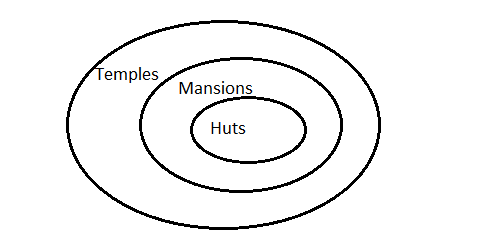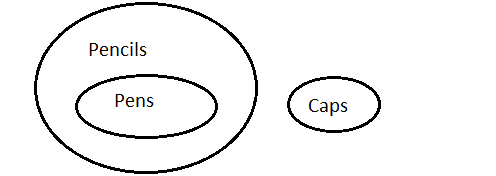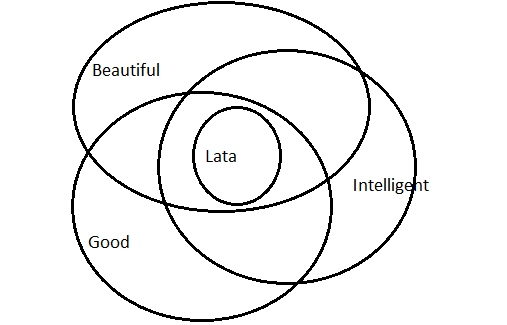Reasoning SyllogimsPage 1
Section-1
Direction: Two statements are given in the question, followed by two conclusions numbered 1 and 2. You have to take the given two statements to be true even, if they seem to be at variance from commonly known facts. Read the conclusions and then decide which of the given conclusions logically.1. |
|
Answer is: C
This is a special case as a combination of universal negative and particular affirmative.
Hence, either some notebooks are papers or no paper is notebook.

This is a special case as a combination of universal negative and particular affirmative.
Hence, either some notebooks are papers or no paper is notebook.
2. |
|
Answer is: DThis shows the case of universal affirmative proposition. so,

Clearly, some temples are huts as well as some temples are mansions. So, both conclusions follow.

Clearly, some temples are huts as well as some temples are mansions. So, both conclusions follow.
3. |
|
Answer is: D
Clearly, neither Conclusion 1 nor 2 follow.

Clearly, neither Conclusion 1 nor 2 follow.
4. |
|
Answer is: D
Clearly, no crocodile is fish and no fish is a crocodile.

Clearly, no crocodile is fish and no fish is a crocodile.
5. |
|
Answer is: B
Clearly, some scooters do not fly.

Clearly, some scooters do not fly.
6. |
|
Answer is: A
Clearly, some good team workers are leaders.

Clearly, some good team workers are leaders.
7. |
|
Answer is: C
This is a special case. So, either Conclusion 1 or 2 follows.

This is a special case. So, either Conclusion 1 or 2 follows.
8. |
|
Answer is: D
Form above, it is clear that none of the conclusion follows.

Form above, it is clear that none of the conclusion follows.
9. |
|
Answer is: A
Clearly, some lawyers are readers.

Clearly, some lawyers are readers.
10. |
|
Answer is: D
From above, it is clear that none of the conclusion follows.

From above, it is clear that none of the conclusion follows.
Comments
Answer of question 8 should be only 2 follow as all the three qualities are present in lata through Venn diagram